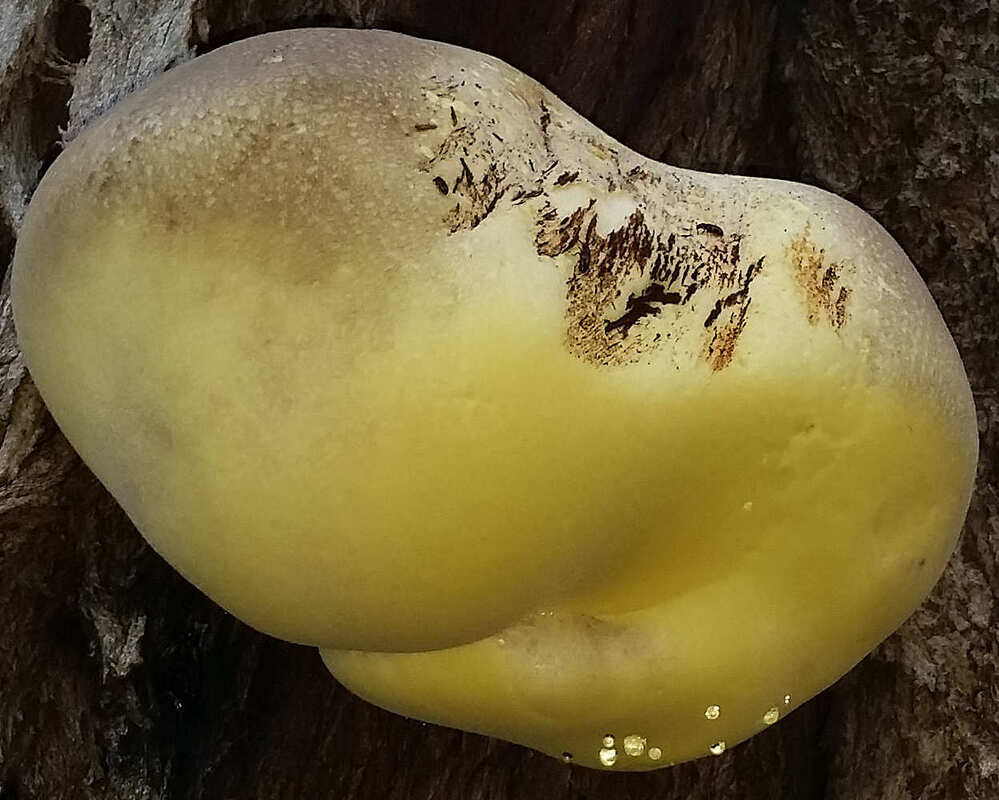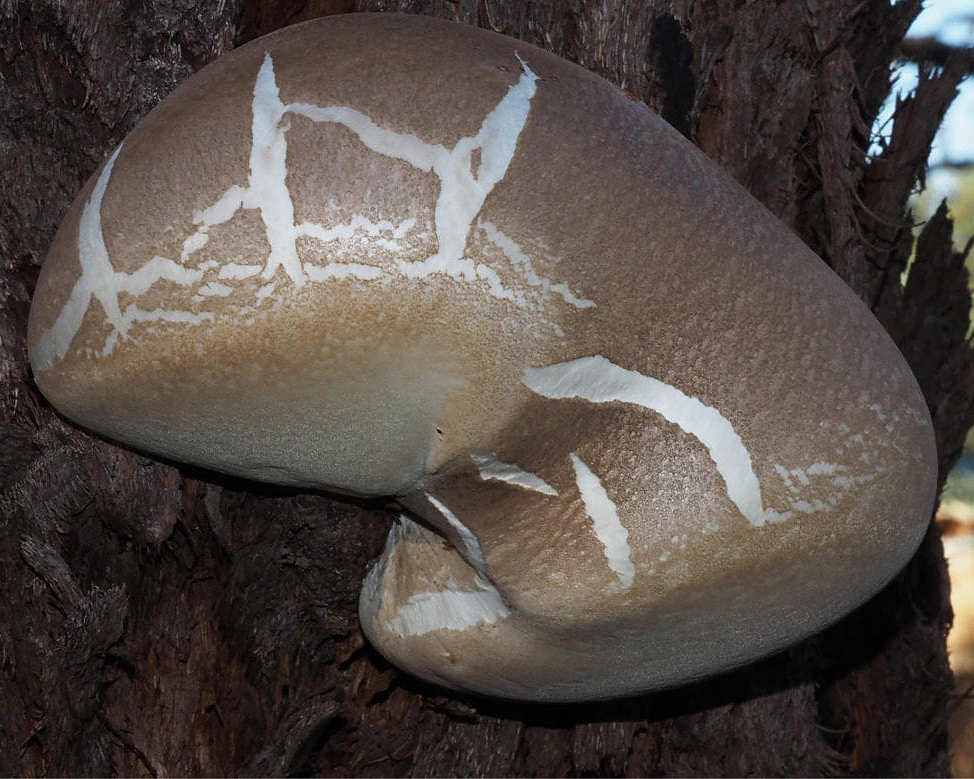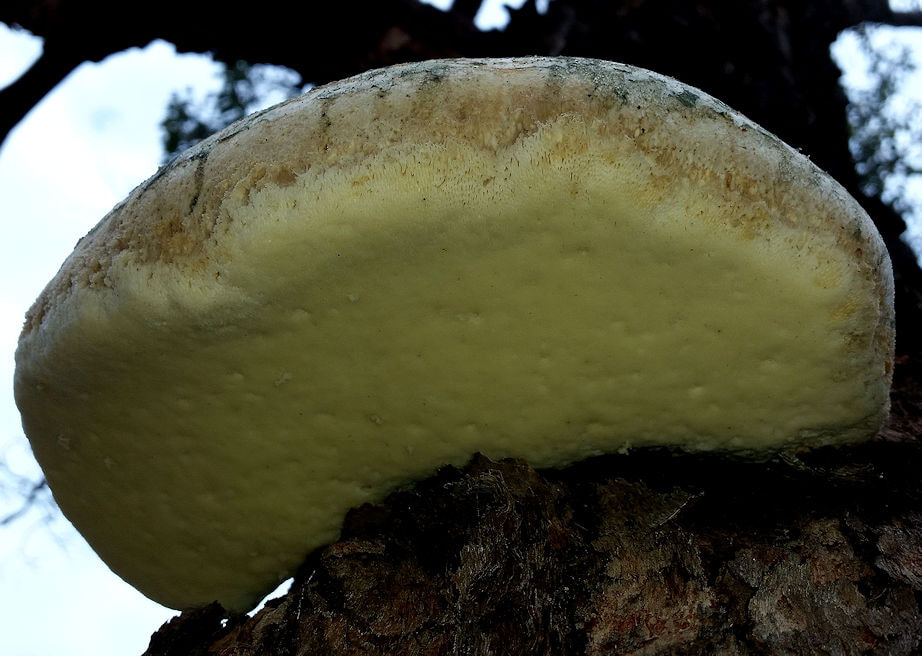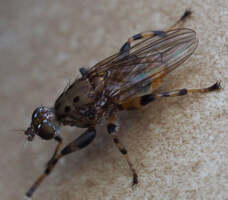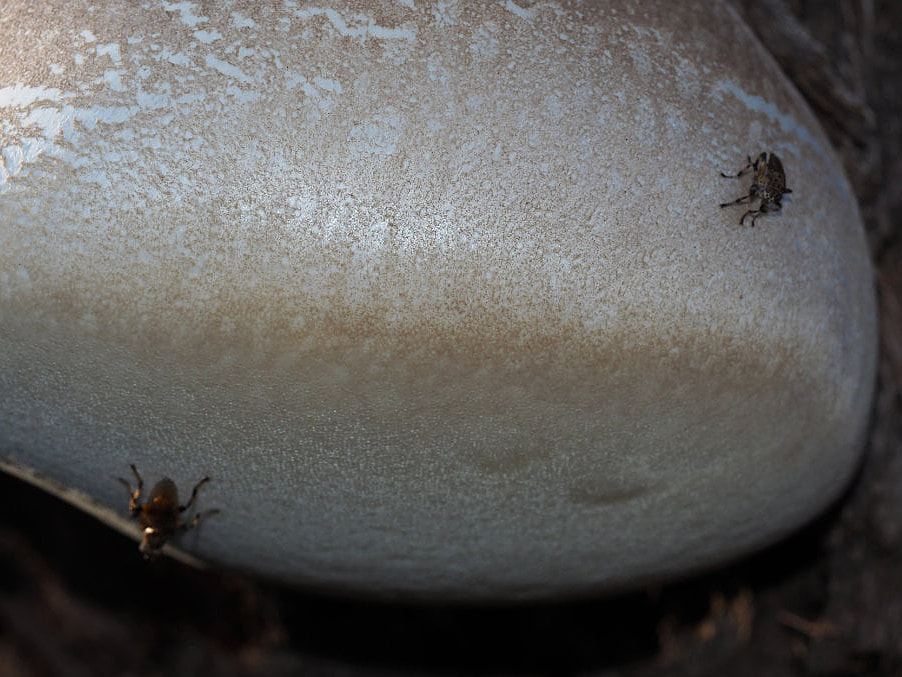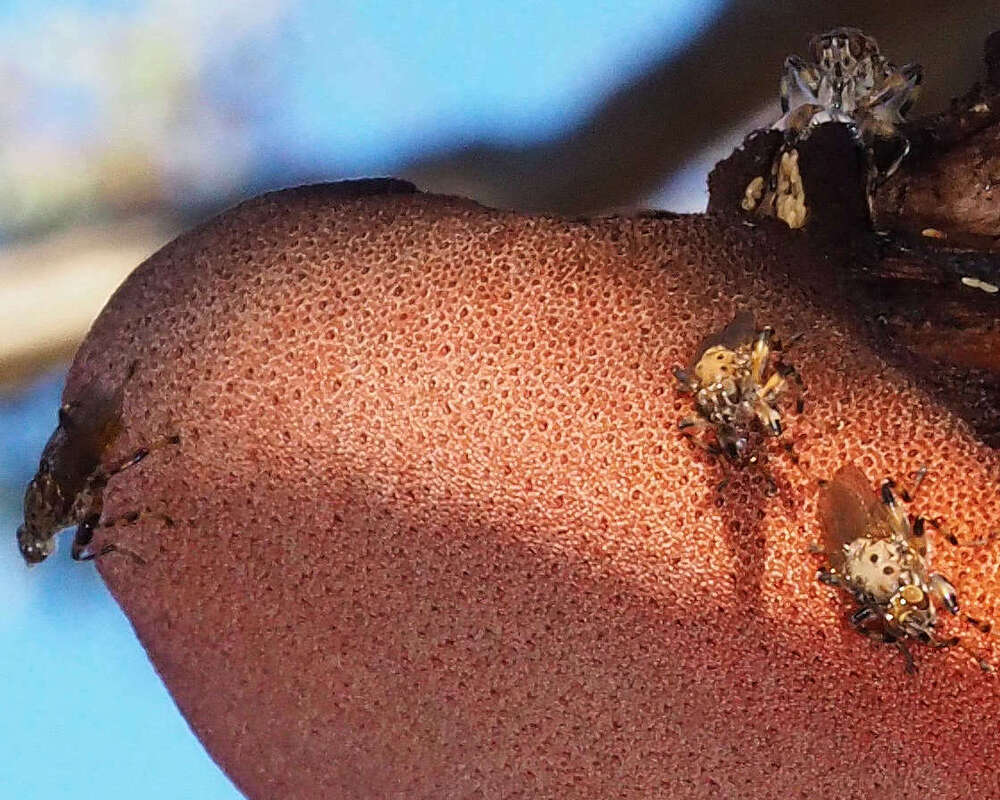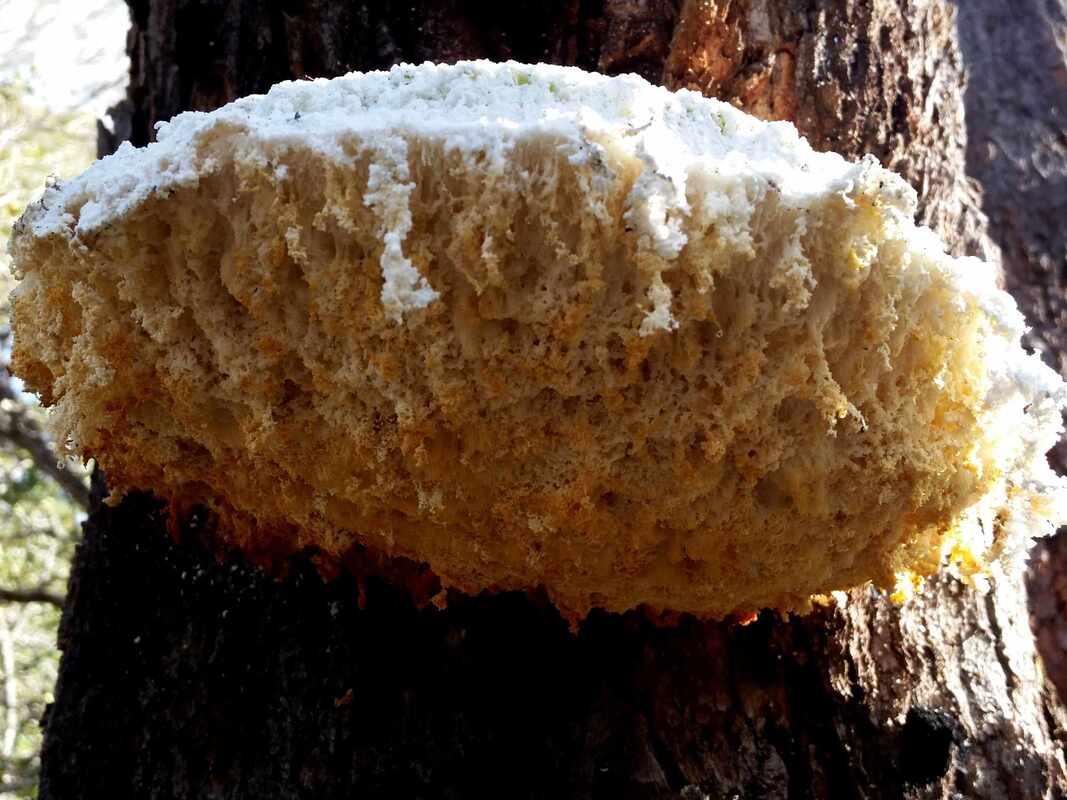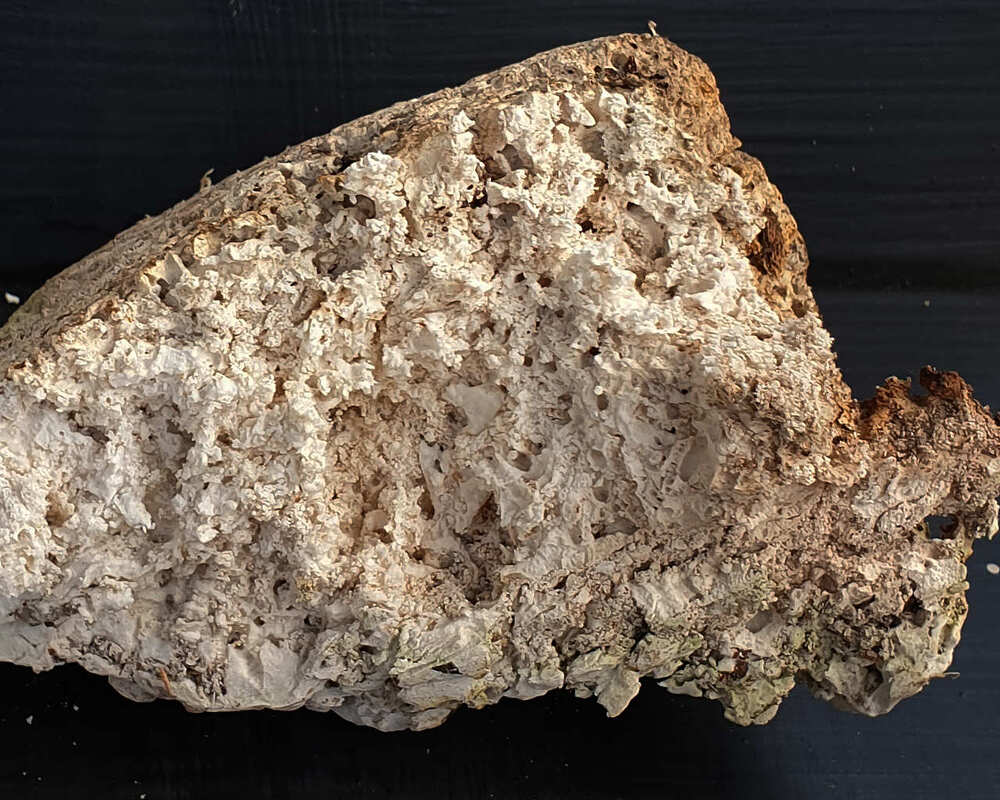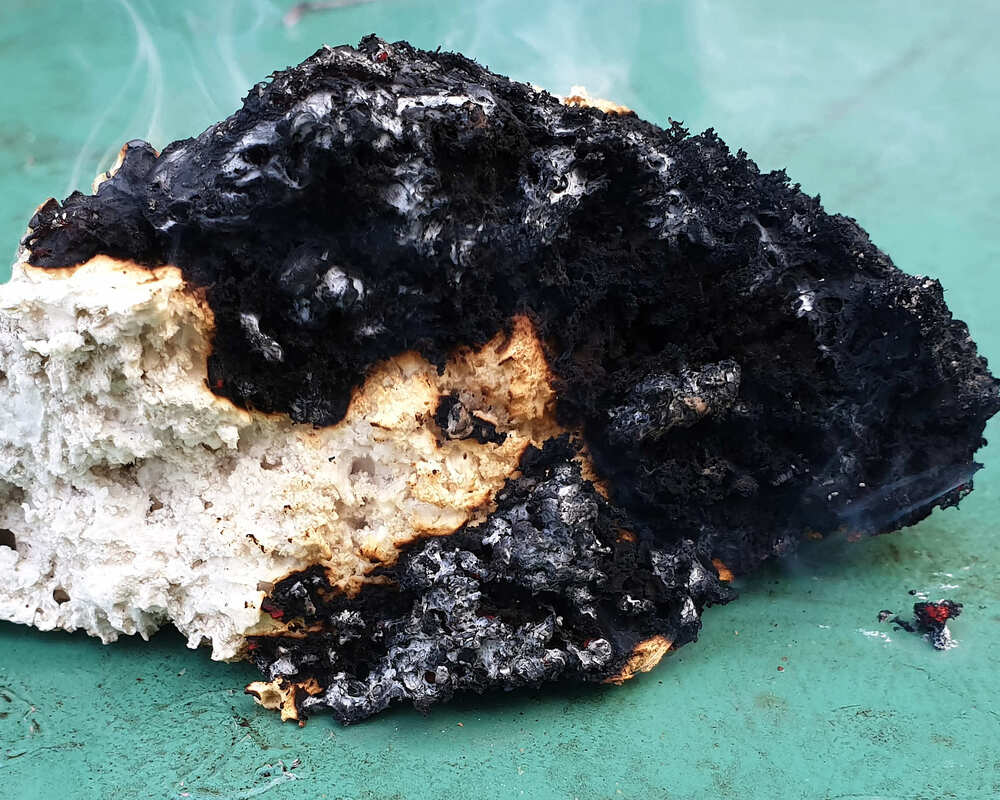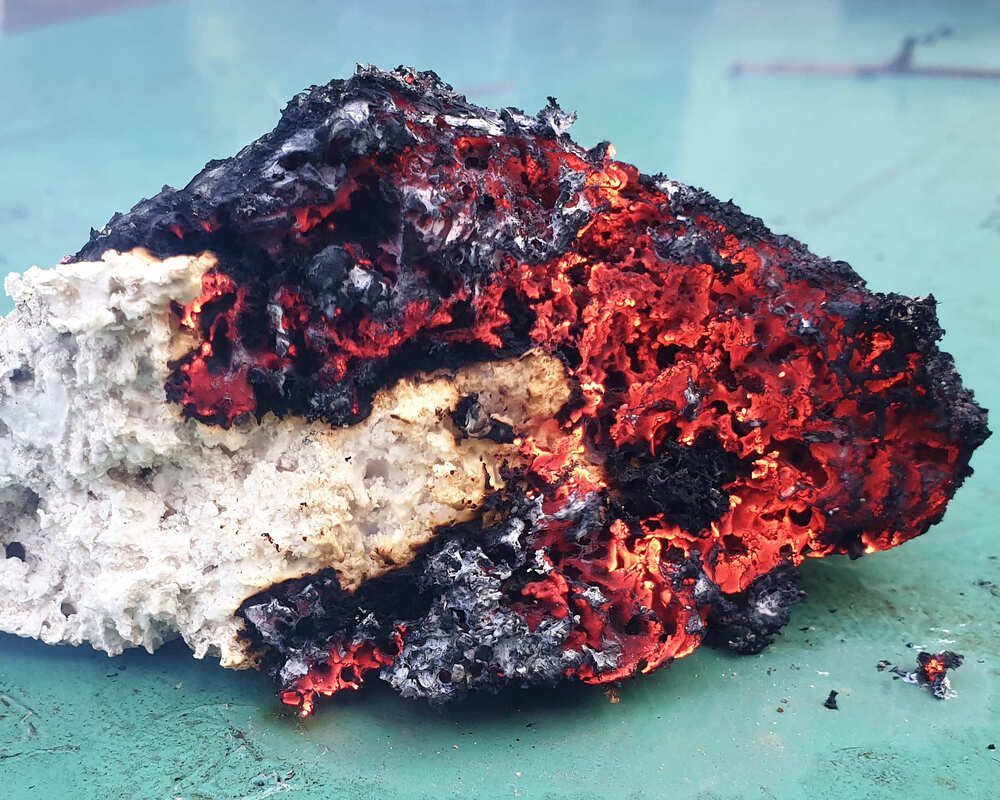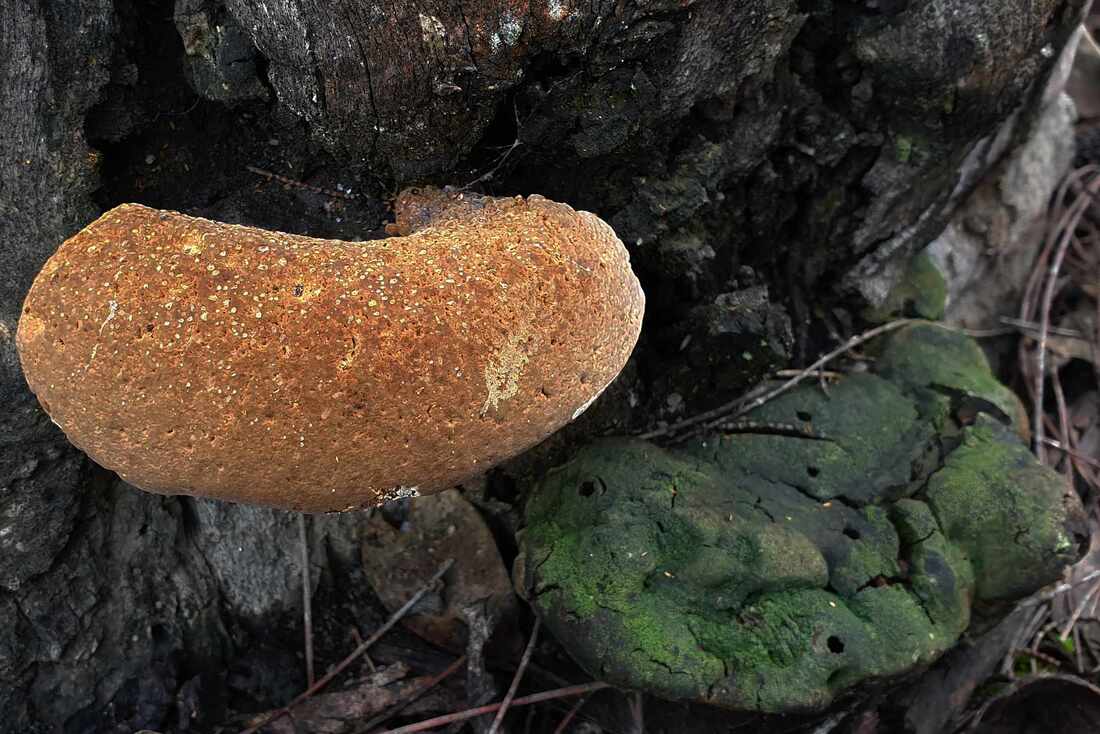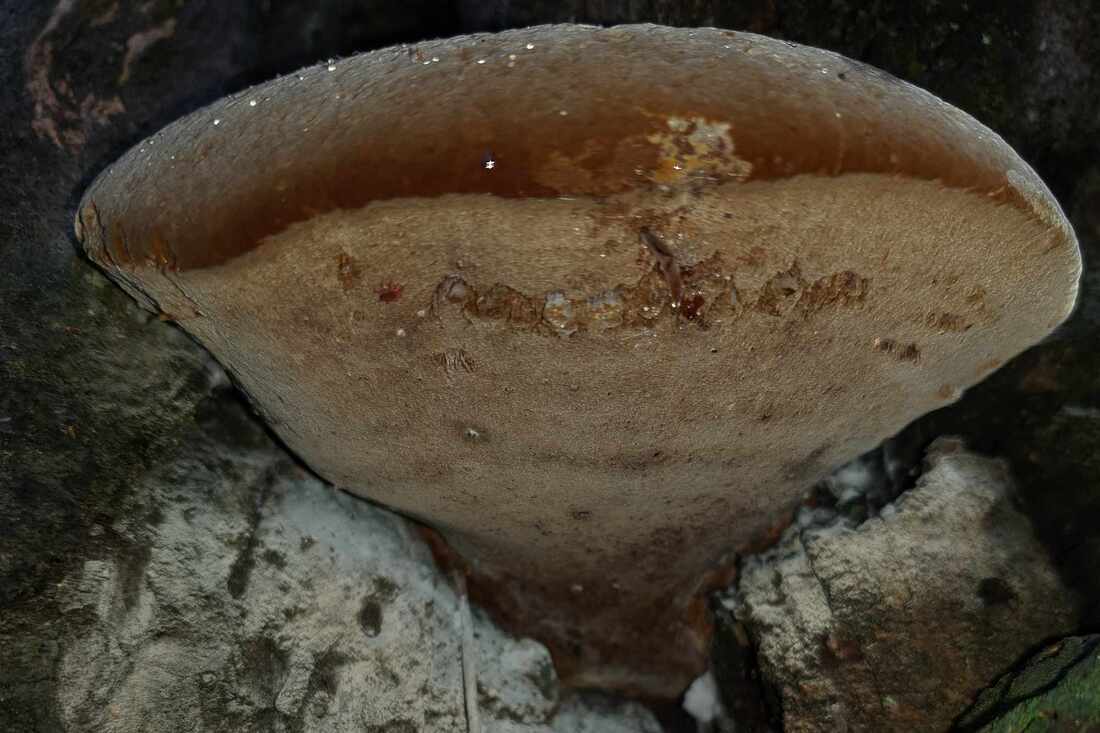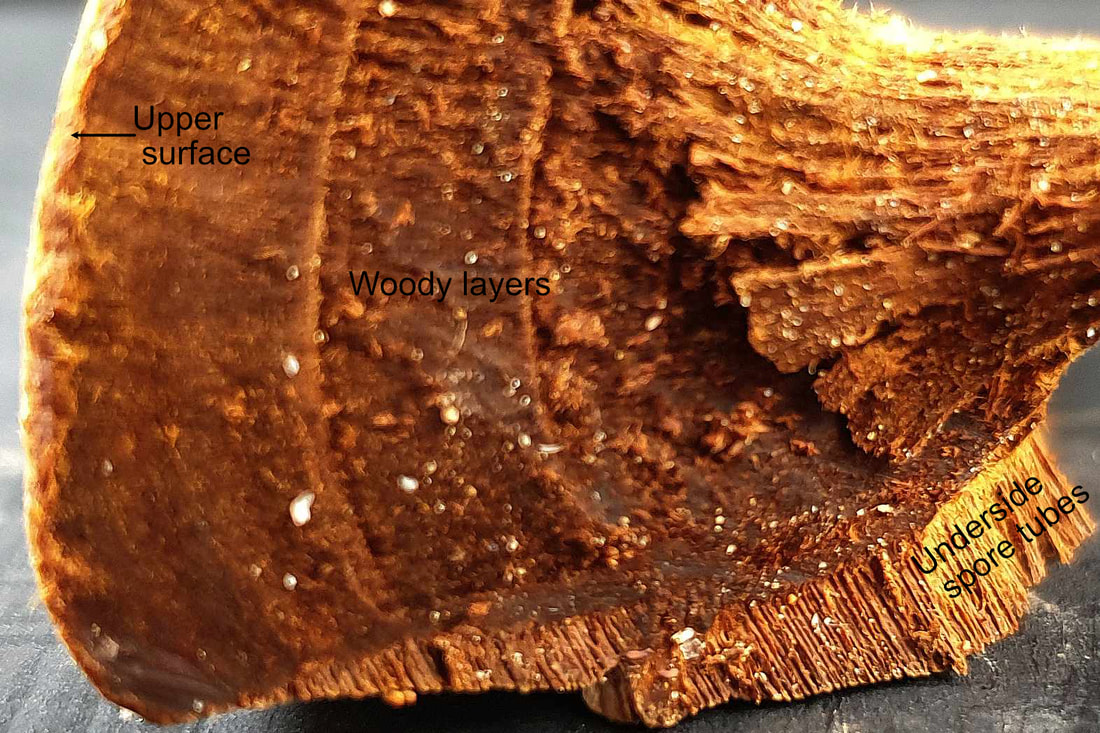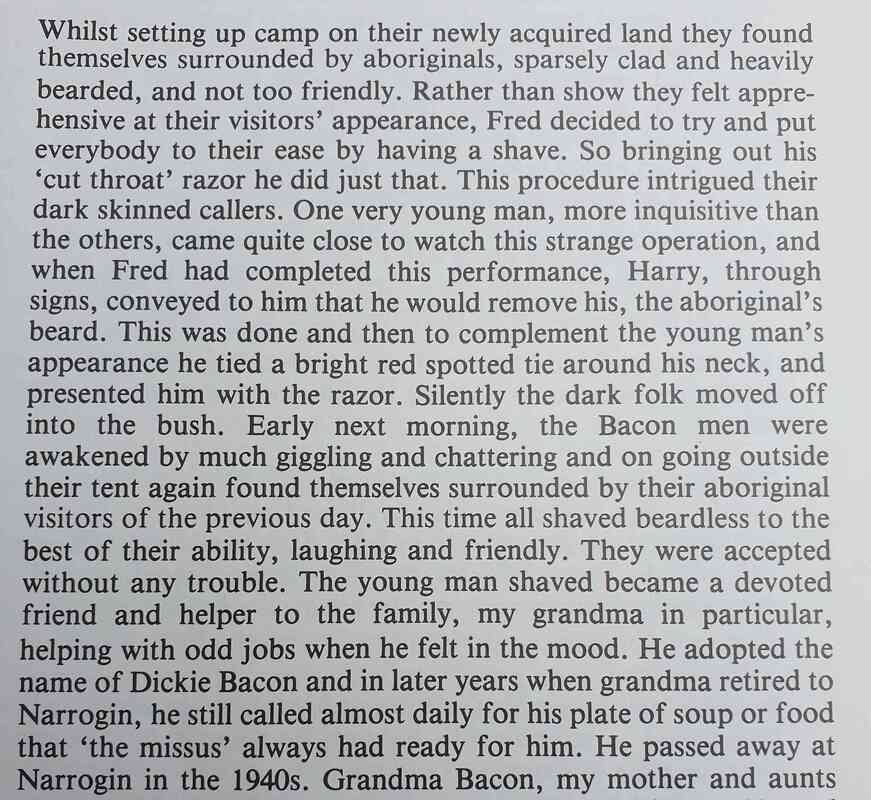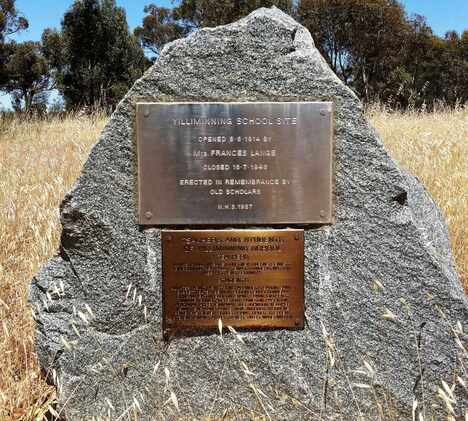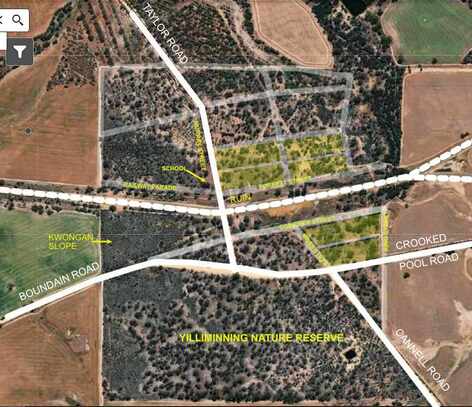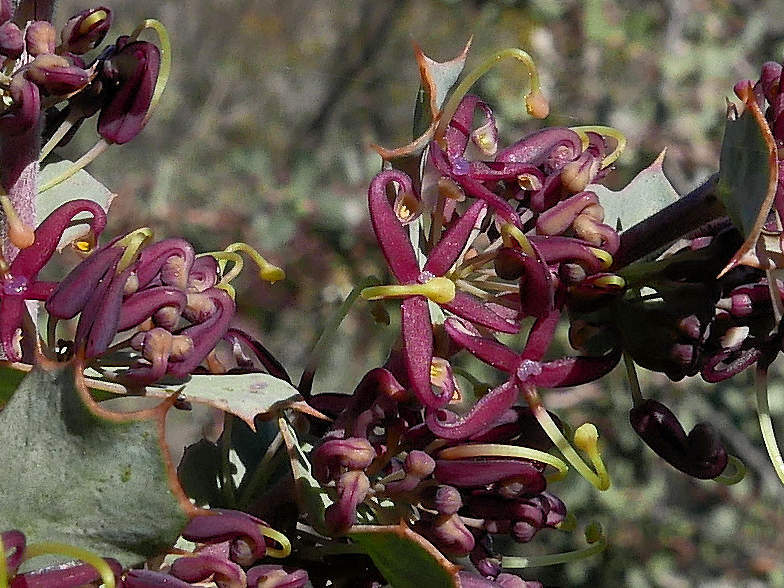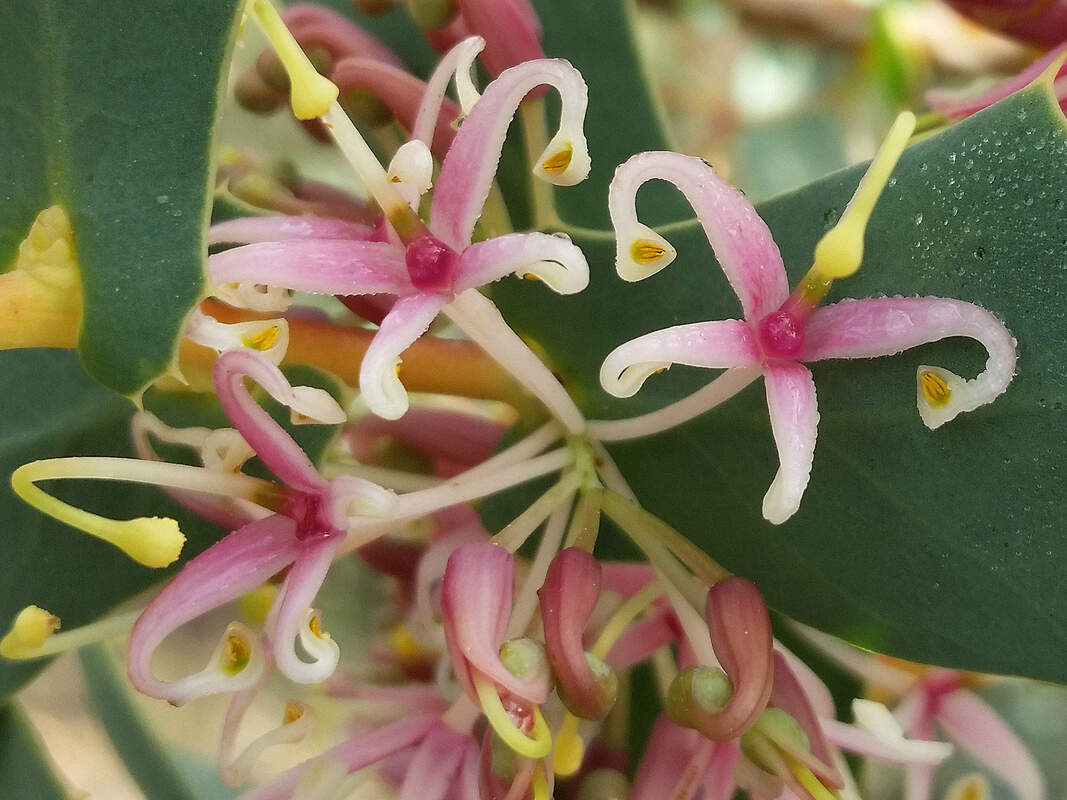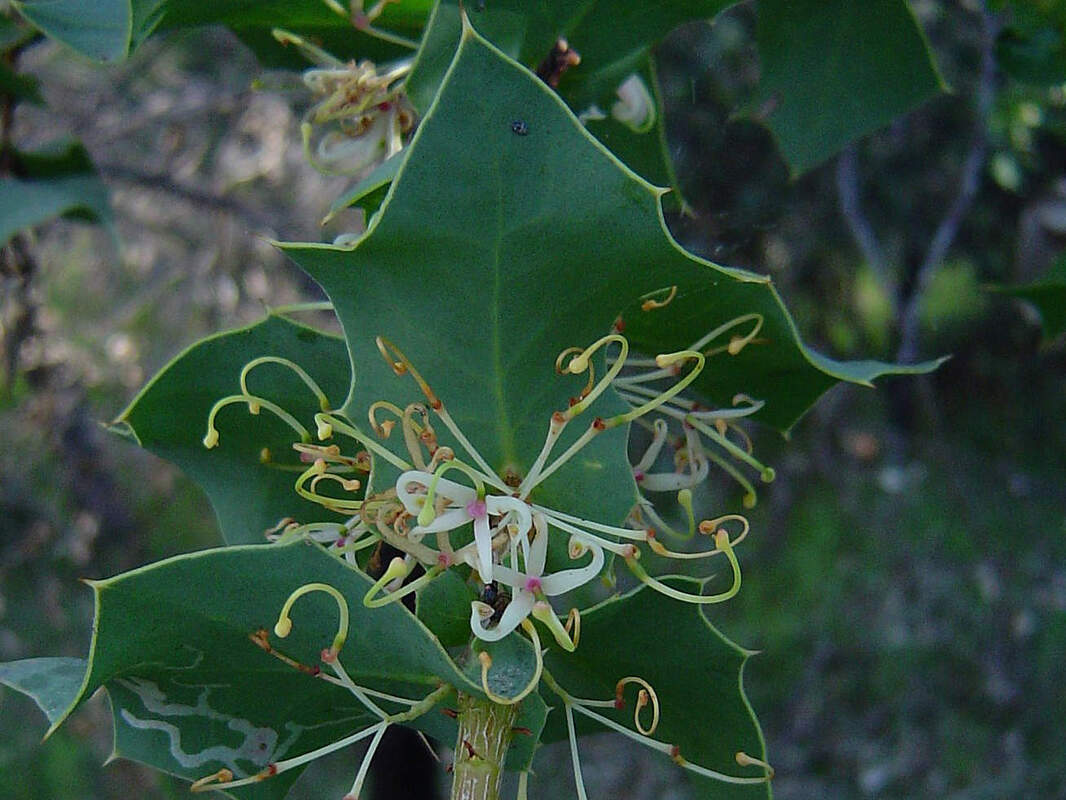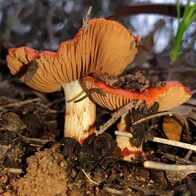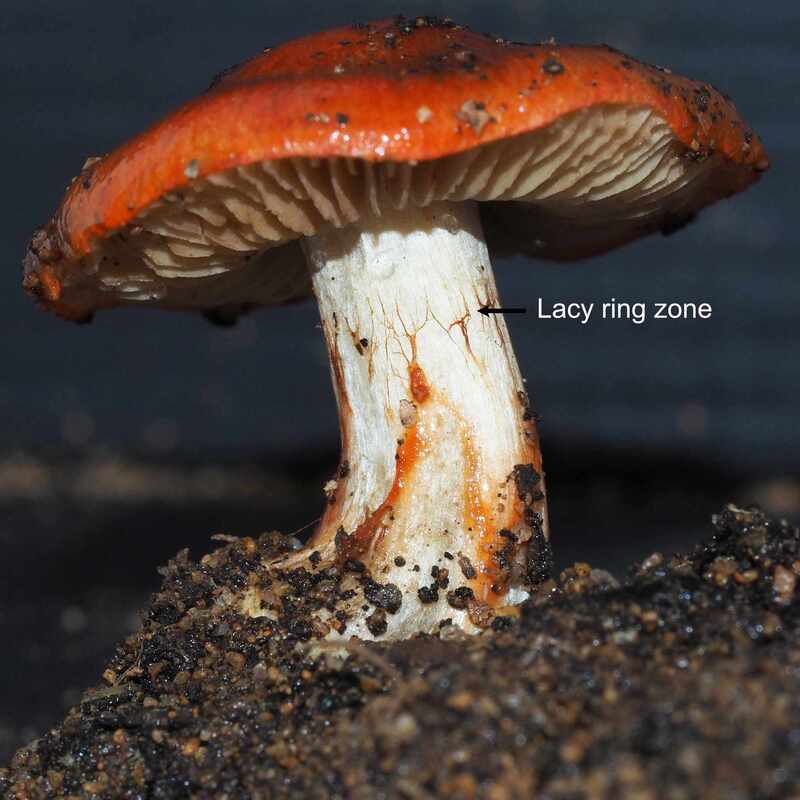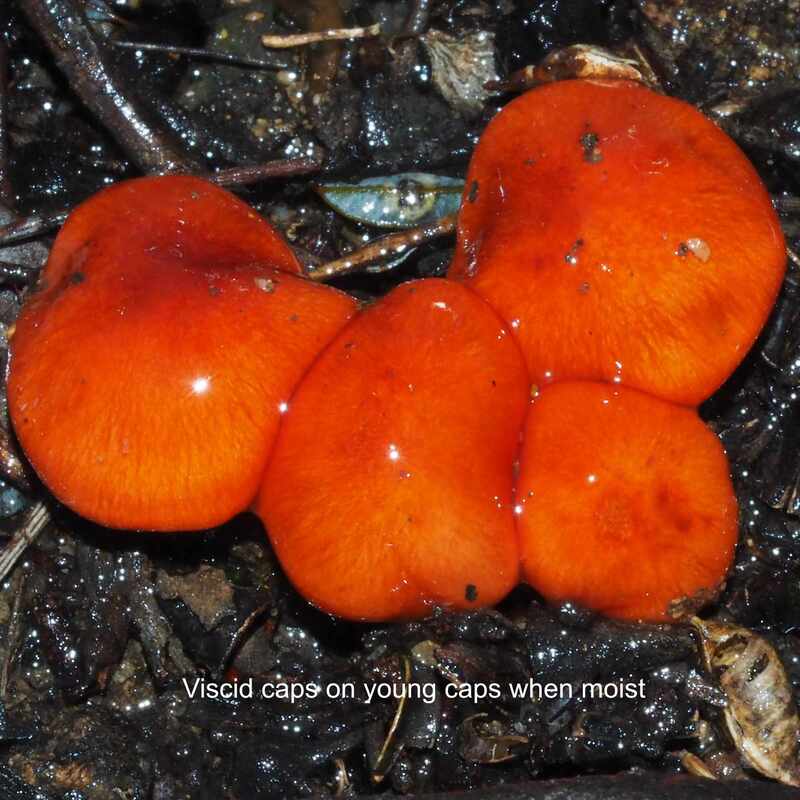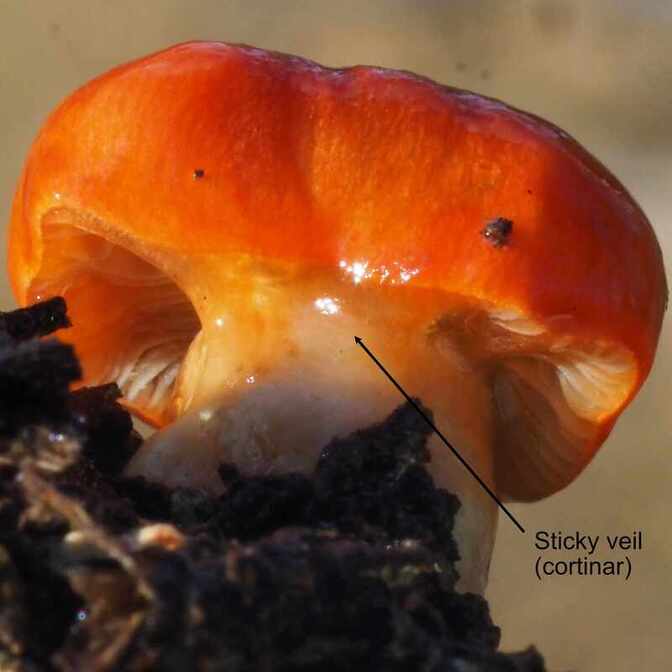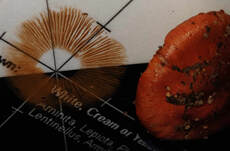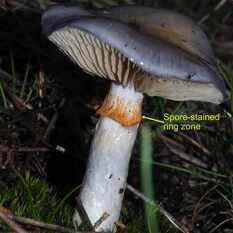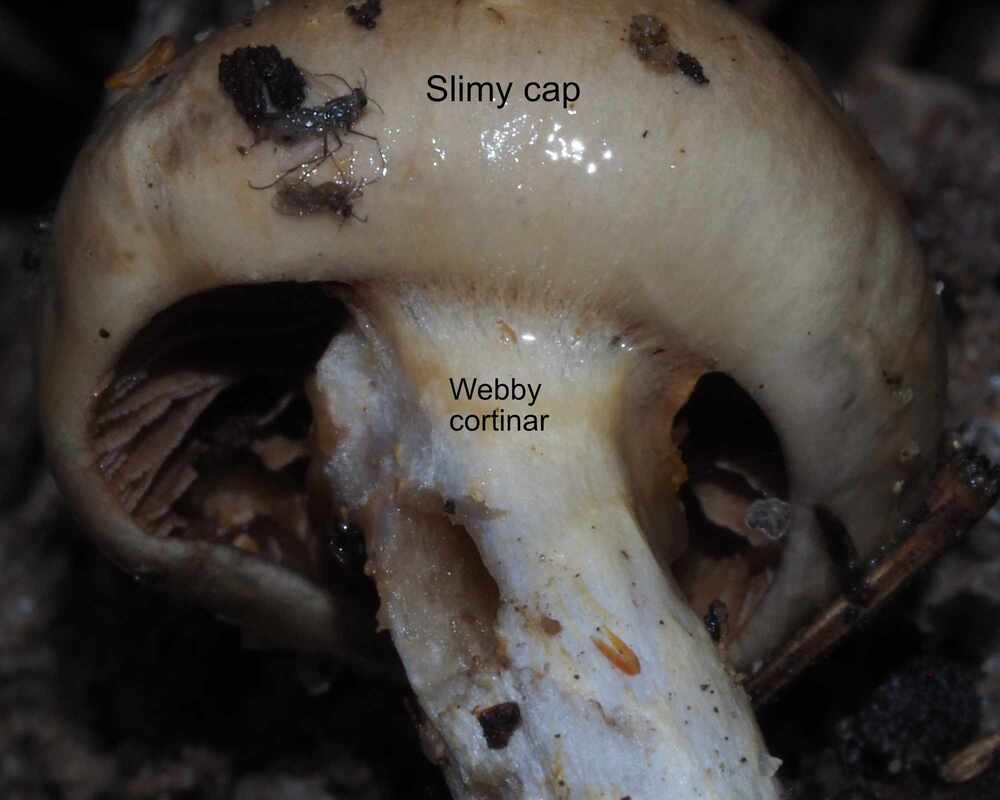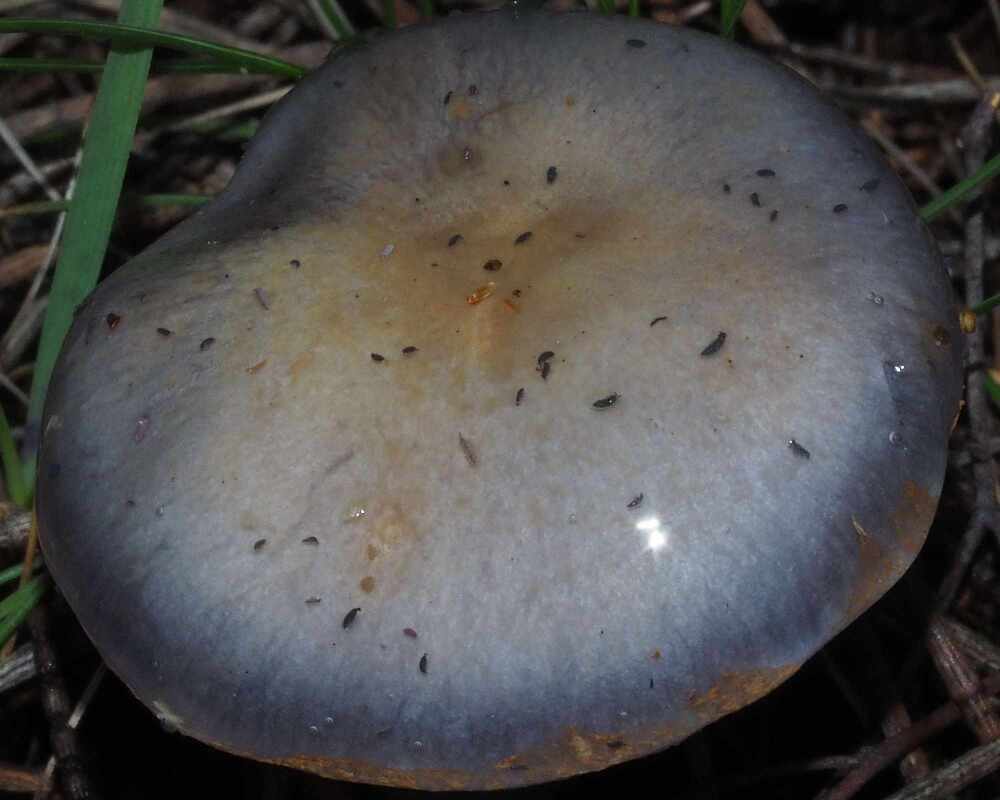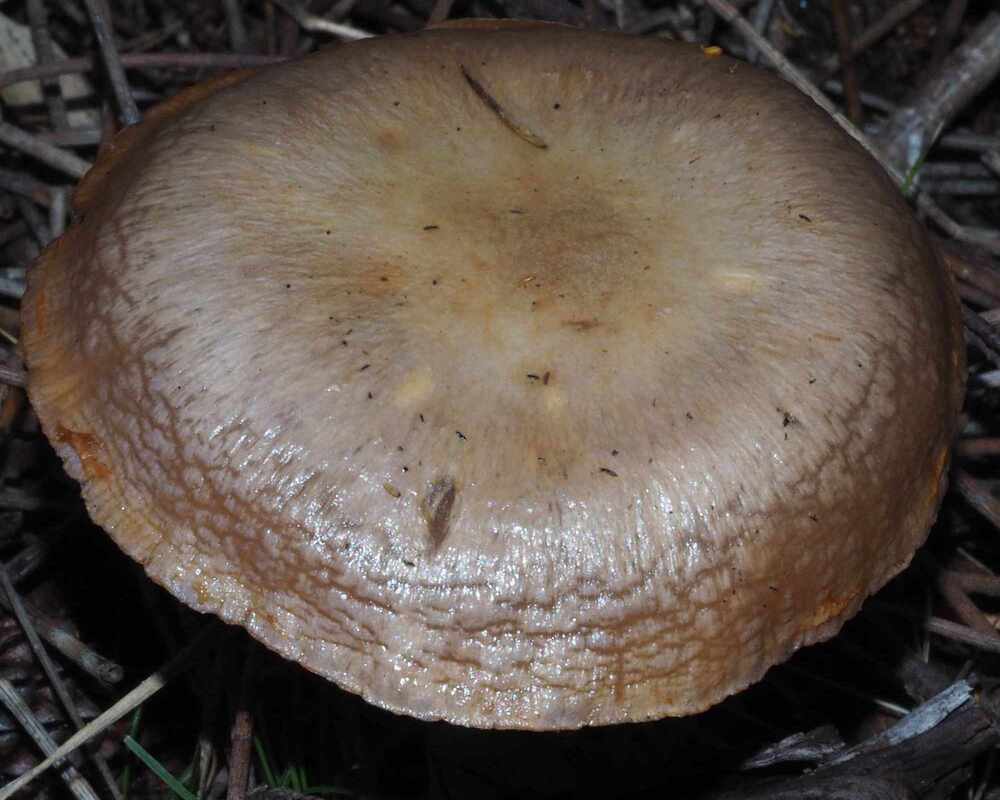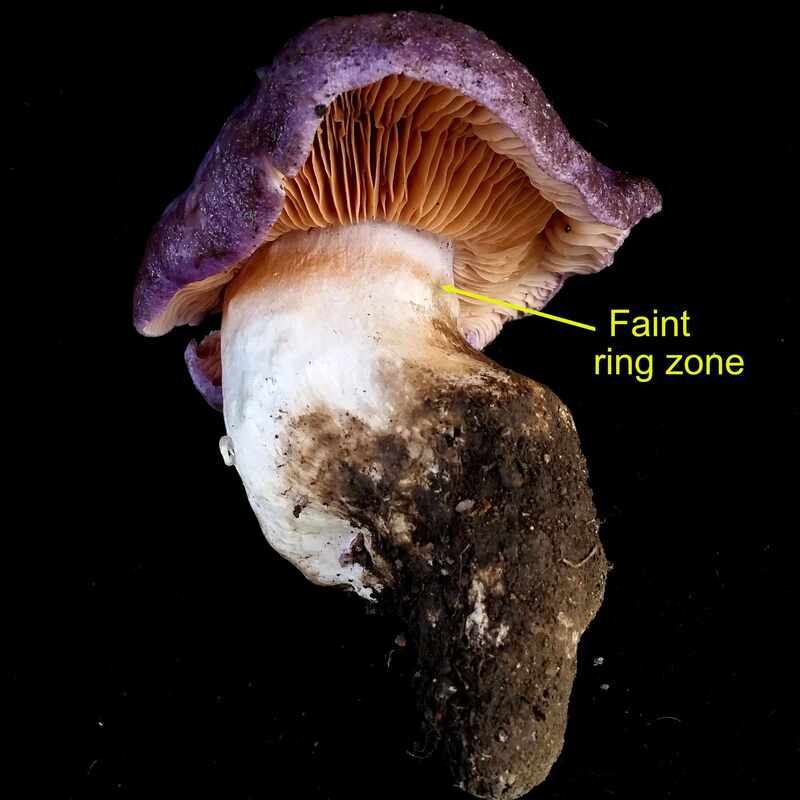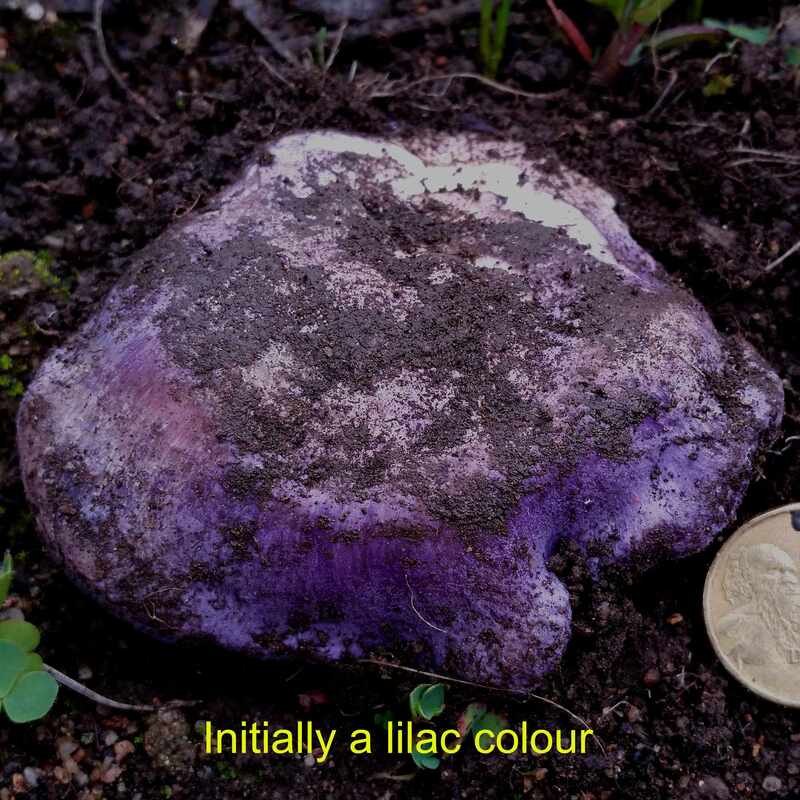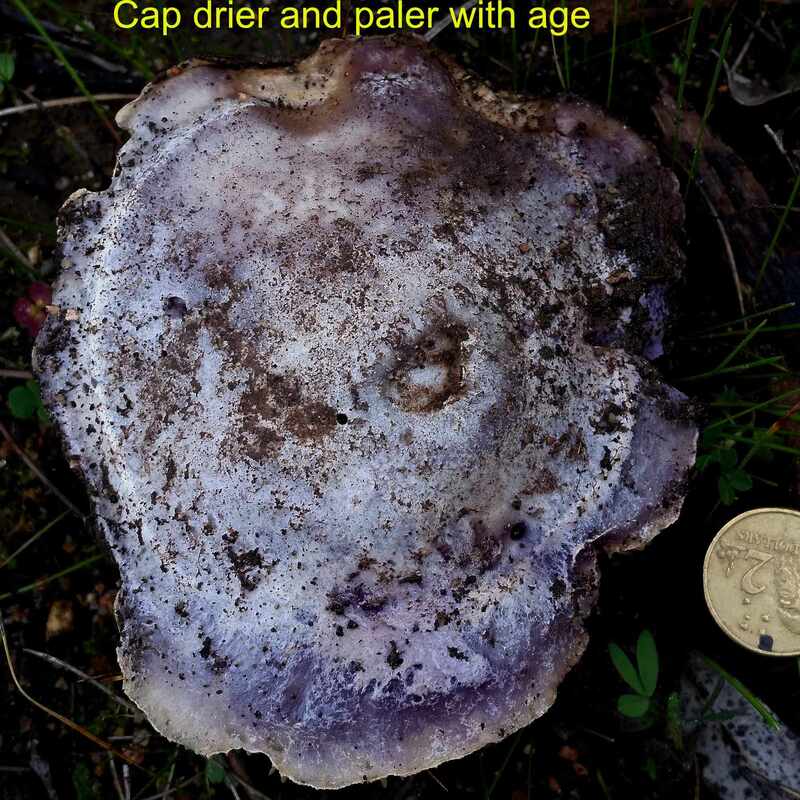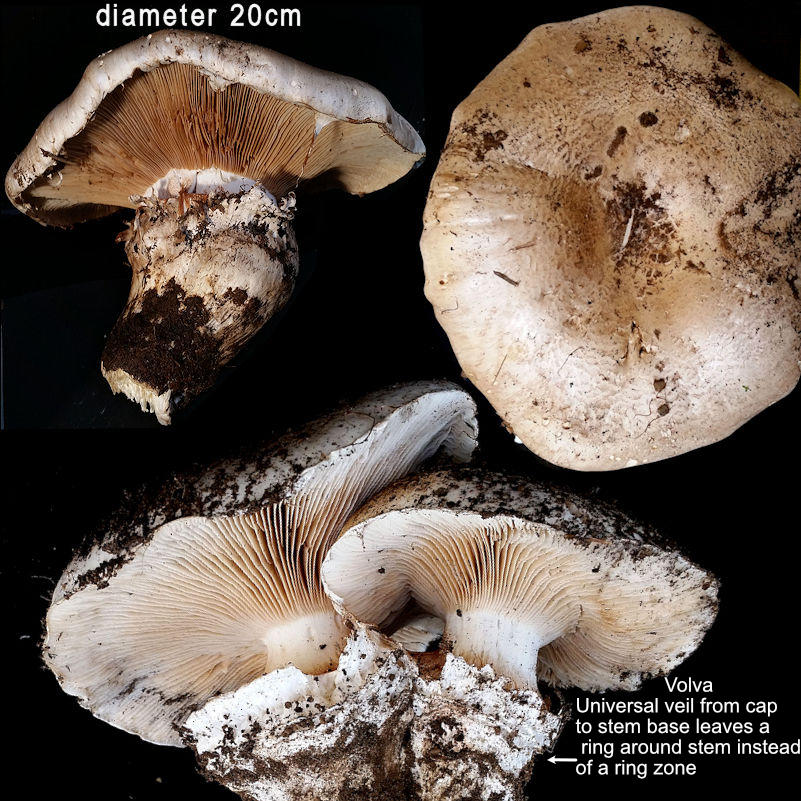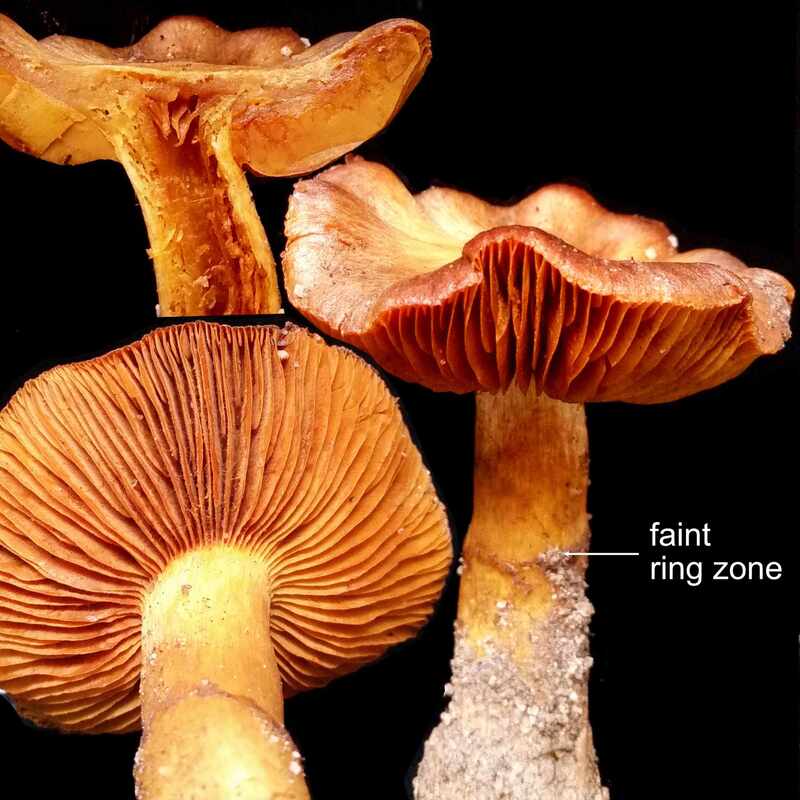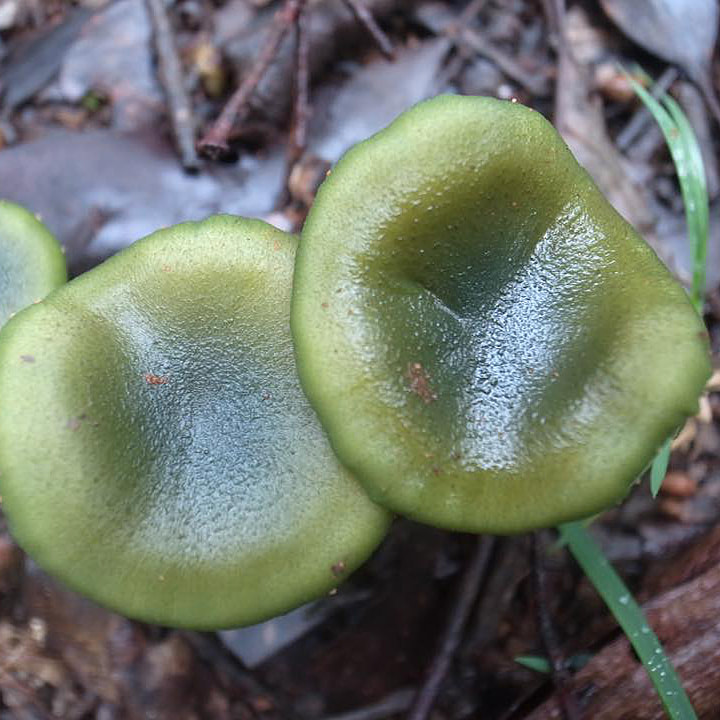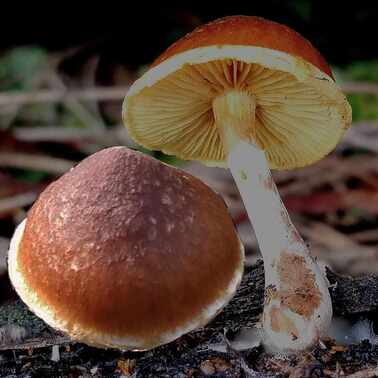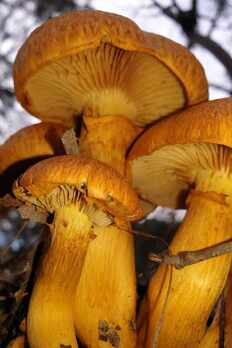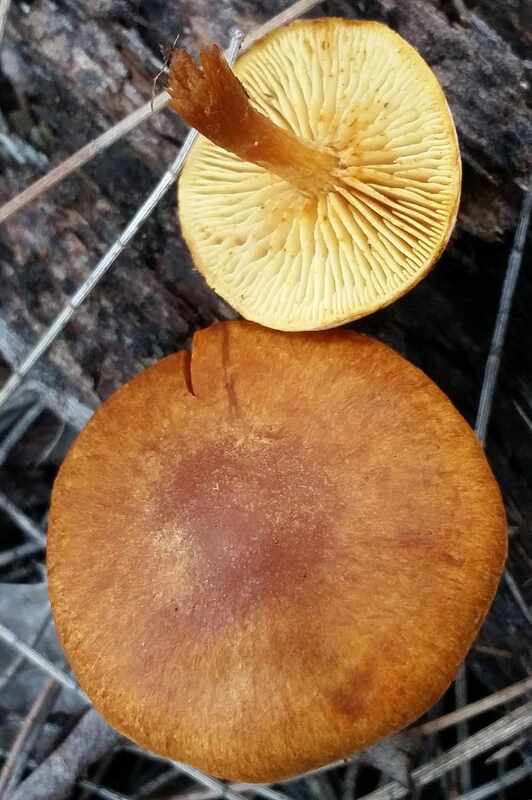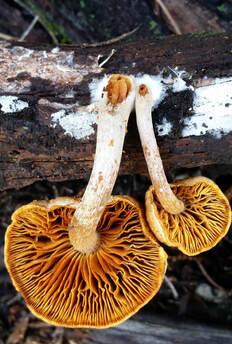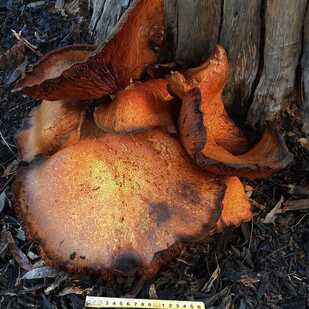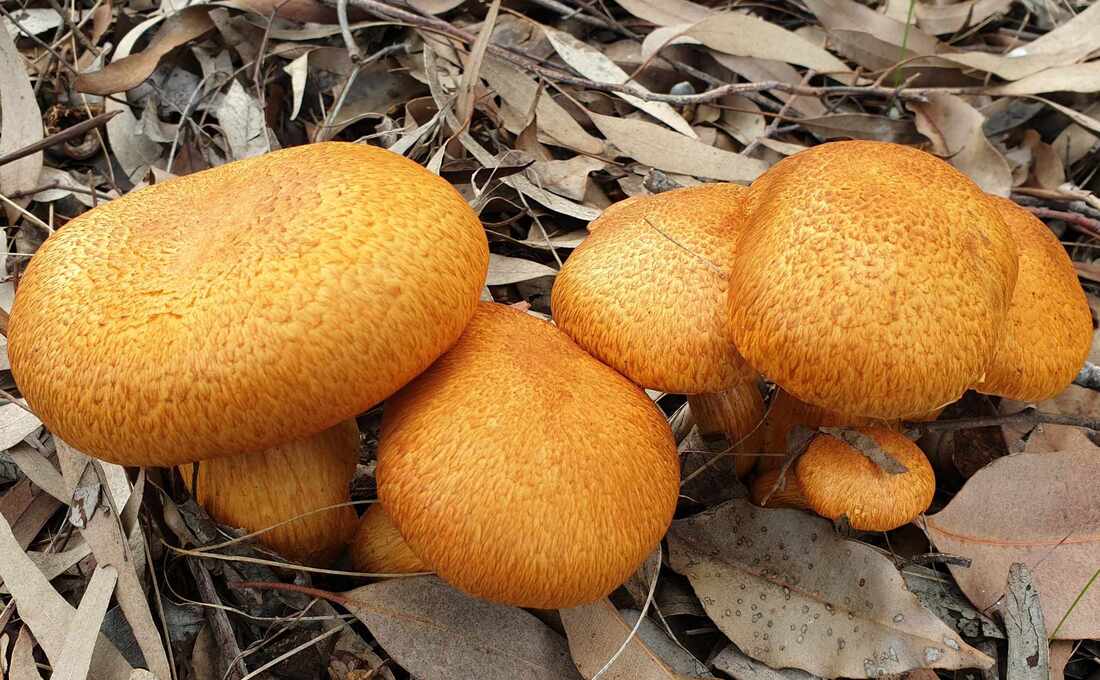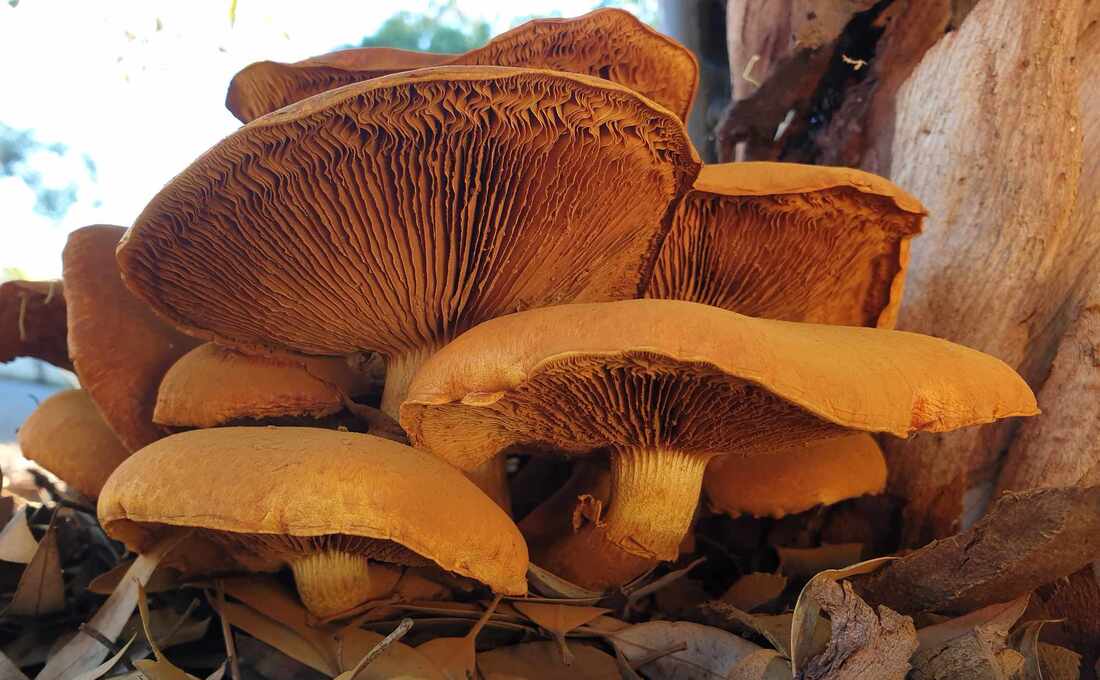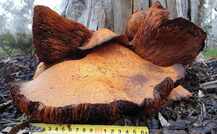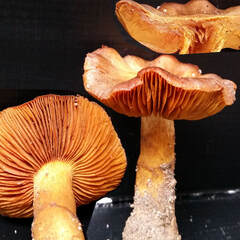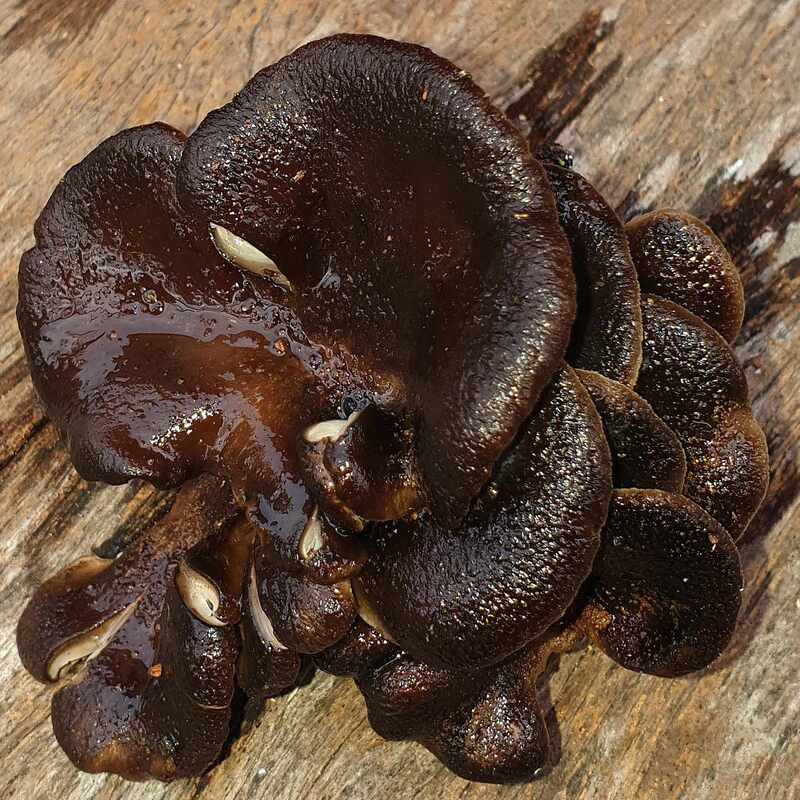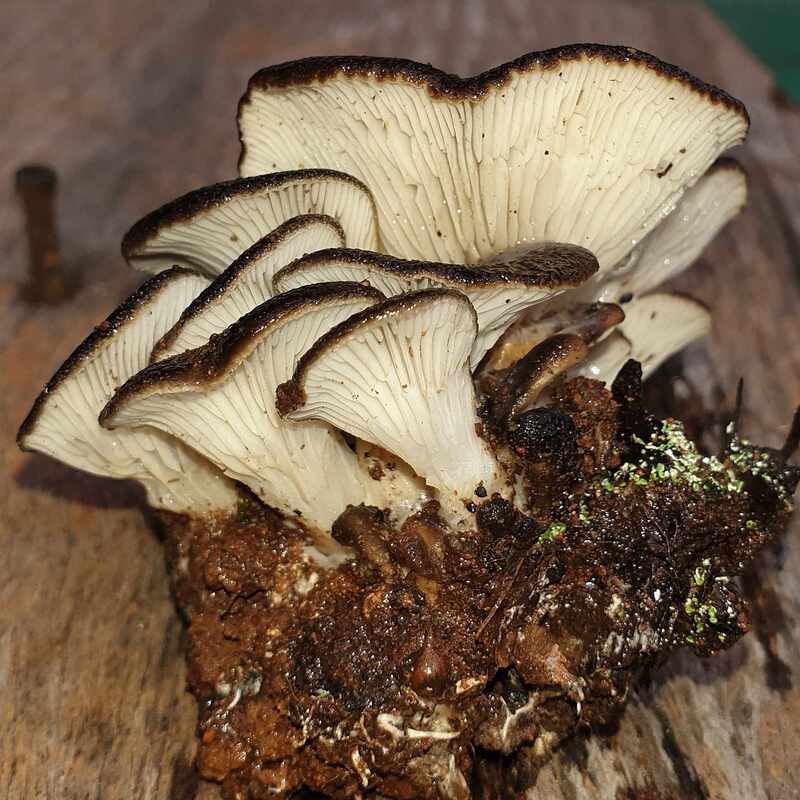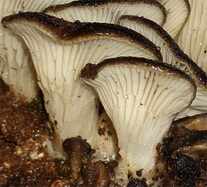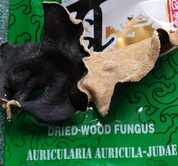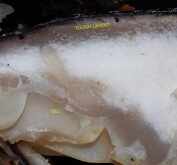In the fungus world, punks are large showy, bracket sporophores (fungal fruiting bodies) that usually occur on their own on the upper trunks of large eucalypts. You can download factsheets on Laetiporus portentosus /white punk and Piptoporus australiensis/curry punk (and other fungi) on this great DBCA website. These fungi cause heartwood rot and may occur on live or dead trees.
Over spring and early summer, they dry out and become quite light with a chalky texture. They are usually seen in this state at the foot of the tree on which they were growing. If conditions are right, a new bracket will develop in the same place the following autumn.
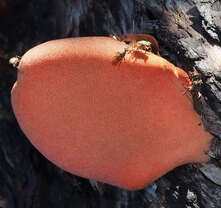 Curry punk or beefsteak fungus
Curry punk or beefsteak fungus Curry punks are similar size, but less common. When fresh the bracket is bright orange, smooth or greasy on the upper surface, with a layer of pores on the underside.
The flesh is rubbery, but very juicy making the brackets quite heavy. Curry punk juice is a good dye and will stain your skin or clothing yellow.
Brackets persist for some months, but rain tends to wash them out and they fade to a whitish colour as they age. When dry they have a distinctive curry odour, hence the common name of curry punk.
Note : This may be a beefsteak fungus Fistulina hepatica.
| Punk fungi attract Tapeigaster species fungus flies called sun flies, which can be entertaining. Male sun flies are feisty. A first arrival will vigously defend its punk against other males for the right to mate with females. They are very persistent and stand their ground against humans as well. Impregnated female flies lay eggs in the punk, which hatch to maggots that thoroughly bore it out to leave a chalky sponge-like shell. |
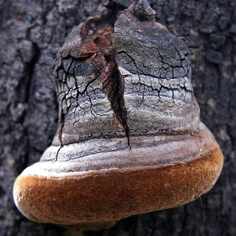 Fomitipora robusta
Fomitipora robusta Fomitiporia robusta/woody layered bracket fungus has a smaller layered woody bracket, which is common on rock sheoaks. I suspect that it is spread by borers, which with the fungus, commonly cause smaller sheoaks to snap off mid-trunk.
